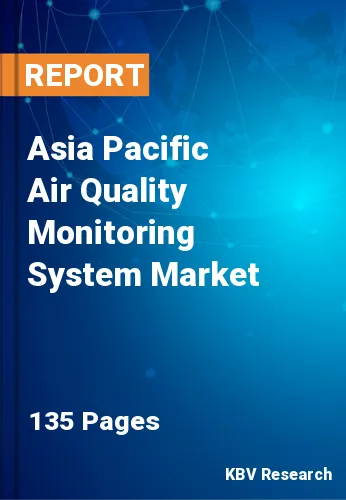The Asia Pacific Air Quality Monitoring System Market would witness market growth of 9.1% CAGR during the forecast period (2019-2025).
There has been a huge increase in atmospheric pollution in major cities across the world, such as Shanghai, Onitsha, Sao Paulo, Zabol, Riyadh, Delhi, Dhaka and Kolkata. Vehicles are a major contributor to emissions because they emit toxic elements like particulate matter, carbon monoxide and sulphur dioxide. The particles are highly carcinogenic because they have the ability to penetrate deep into the lungs and bloodstream, which could cause permanent DNA mutations and even heart attacks. As a result, governments have taken initiatives to reduce the release of pollutants to the atmosphere. For example, as part of the National Clean Air Program (NCAP) launched in 2017, India's government aims to install 300 real-time air quality monitoring systems across the country by 2024. Additional government initiatives to build smart cities are also expected to drive consumer demand by digitalizing the infrastructure of a city, including transportation systems and wireless sensors.
The introduction of cloud computing into air quality monitoring systems has enabled the design of air quality control systems with multiple facilities. In addition, government agencies are increasingly adopting cloud-based software systems that display anywhere and anytime the concentration of various contaminants in the atmosphere. However, market operating companies are designing and developing software solutions that collect sensor data to continuously view the concentration of various pollutants.
Based on Pollutant Type, the market is segmented into Chemical and Physical. Chemical Pollutants segment is further bifurcated into Carbon Oxides, Sulphur Oxides, Nitrogen Oxides, Volatile Organic Compounds and Others. Based on Component, the market is segmented into Hardware, Software and Services. Based on Product Type, the market is segmented into Outdoor and Indoor. Based on End User, the market is segmented into Industrial, Commercial and Residential. Based on countries, the market is segmented into China, Japan, India, South Korea, Singapore, Malaysia, and Rest of Asia Pacific.
Free Valuable Insights: Air Quality Monitoring System Market in Asia Pacific is expected to register a CAGR of 9.1% during the forecast period (2019-2025)
The market research report covers the analysis of key stake holders of the market. Key companies profiled in the report include Thermo Fisher Scientific, Inc., Siemens AG, Emerson Electric Co., General Electric (GE) Co., 3M Company, Horiba Ltd., Honeywell International, Inc., TE Connectivity Ltd., Agilent Technologies, Inc., and Teledyne Technologies, Inc.
Market Segmentation:
By Pollutants
By Component
By Product Type
By End User
By Country
Companies Profiled
Our team of dedicated experts can provide you with attractive expansion opportunities for your business.

